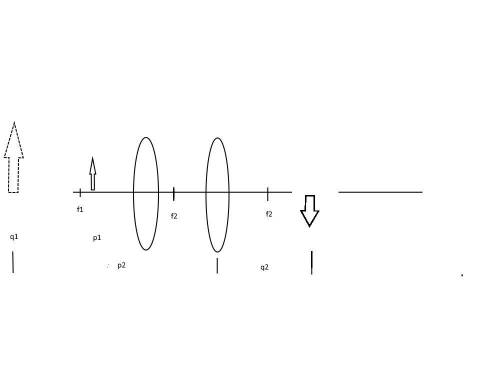
Physics, 28.08.2020 03:01, kharmaculpepper
(Application) You are asked to design a multiple lens system for the scenarios below. The lenses youhave available to you are:1. converging (f =7.5 cm)2. converging (f =15.0 cm)3. diverging (f = -15.0 cm)Think about the following scenarios:A) Lens 1 makes a real image i1, of which lens 2 makes a real image i2.B) Lens 1 makes a real image i1, of which diverging lens 2 makes a virtual image i2.C) Converging lens 1 makes a virtual image i1, of which converging lens 2 makes a virtual image i2.D) Converging lens 1 makes a virtual image i1, of which lens 2 makes a real image i2.For each scenario, decide:1) What type of lens is lens 1? Lens 2? Why? 2) Where should the object be placed with respect to the focal point to make the indicated type of image?3) Make a schematic drawing for Scenario D only. If you want extra practice, try to makeschematic drawings of the other three scenarios.

Answers: 1
Other questions on the subject: Physics

Physics, 21.06.2019 16:40, 25mnauman
An airplane flying parallel to the ground undergoes two consecutive displacements. the first is 76 km at 39.8◦ west of north, and the second is 156 km at 59.9◦ east of north. what is the magnitude of the plane’s total displacement? answer in units of km. 020 (part 2 of 2) 10.0
Answers: 1


Physics, 22.06.2019 17:10, katelynzaro
It's a snowy day and you're pulling a friend along a level road on a sled. you've both been taking physics, so she asks what you think the coefficient of friction between the sled and the snow is. you've been walking at a steady 1.5m/s, and the rope pulls up on the sled at a 32 ∘ angle. you estimate that the mass of the sled, with your friend on it, is 65 kg and that you're pulling with a force of 80 n .
Answers: 1

Physics, 22.06.2019 19:10, summer132
Global warming will produce rising sea levels partly due to melting ice caps but also due to the expansion of water as average ocean temperatures rise. to get some idea of the size of this effect, calculate the change in length (in m) of a column of water 1.45 km high for a temperature increase of 1.12°c. assume the column is not free to expand sideways. as a model of the ocean, that is a reasonable approximation, as only parts of the ocean very close to
Answers: 3
Do you know the correct answer?
(Application) You are asked to design a multiple lens system for the scenarios below. The lenses you...
Questions in other subjects:

Mathematics, 06.03.2020 18:32






English, 06.03.2020 18:33

Biology, 06.03.2020 18:33









